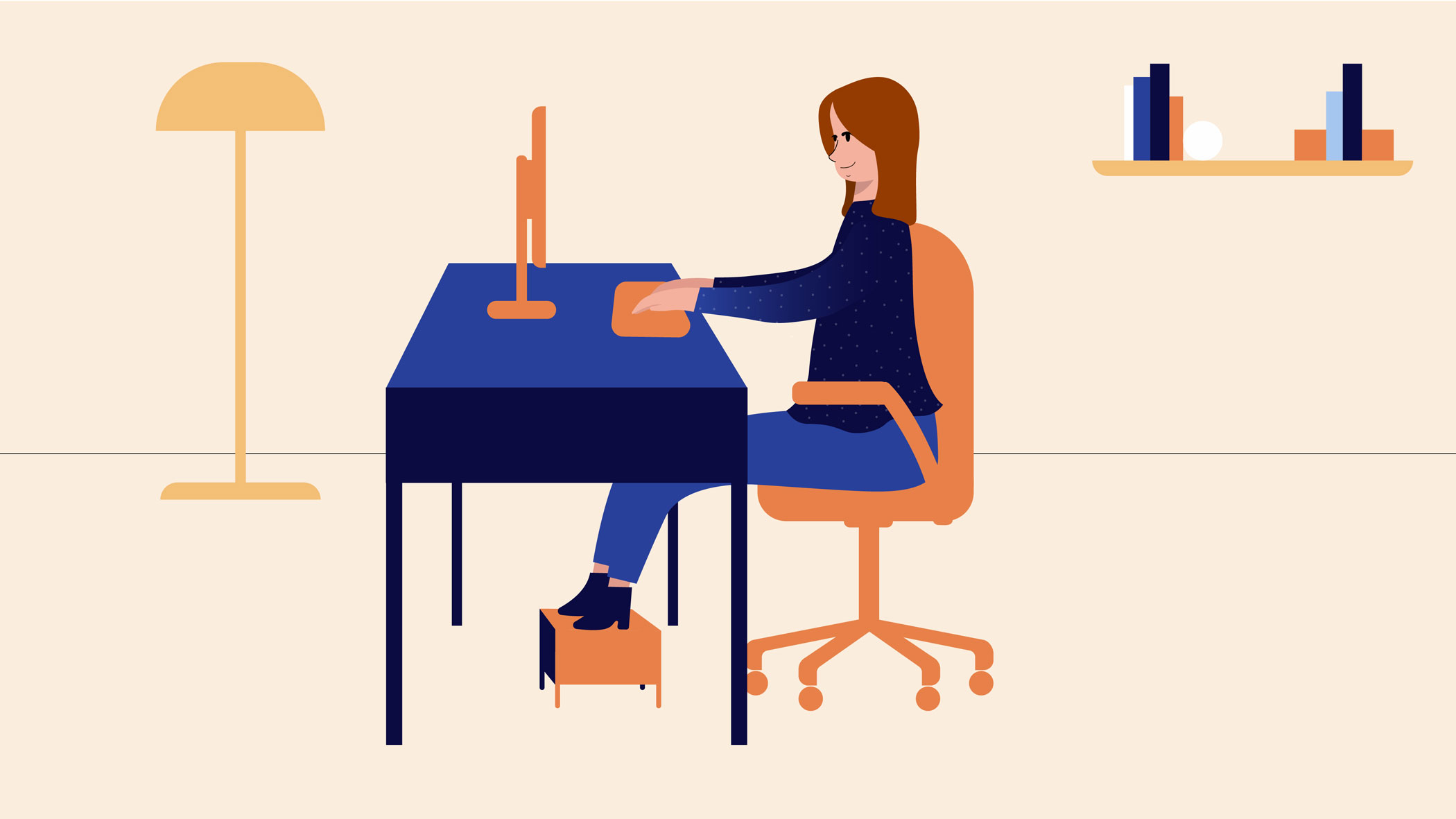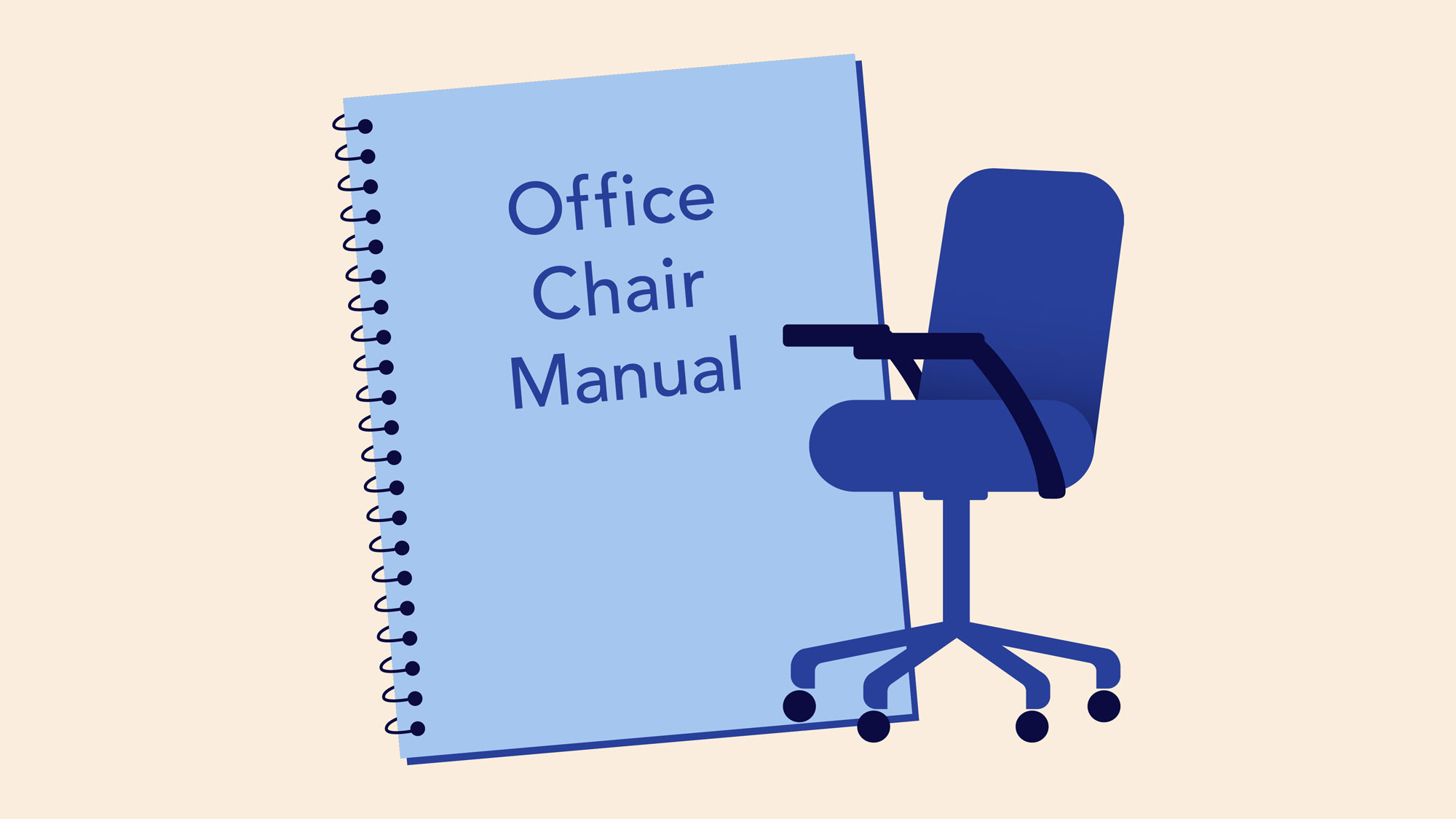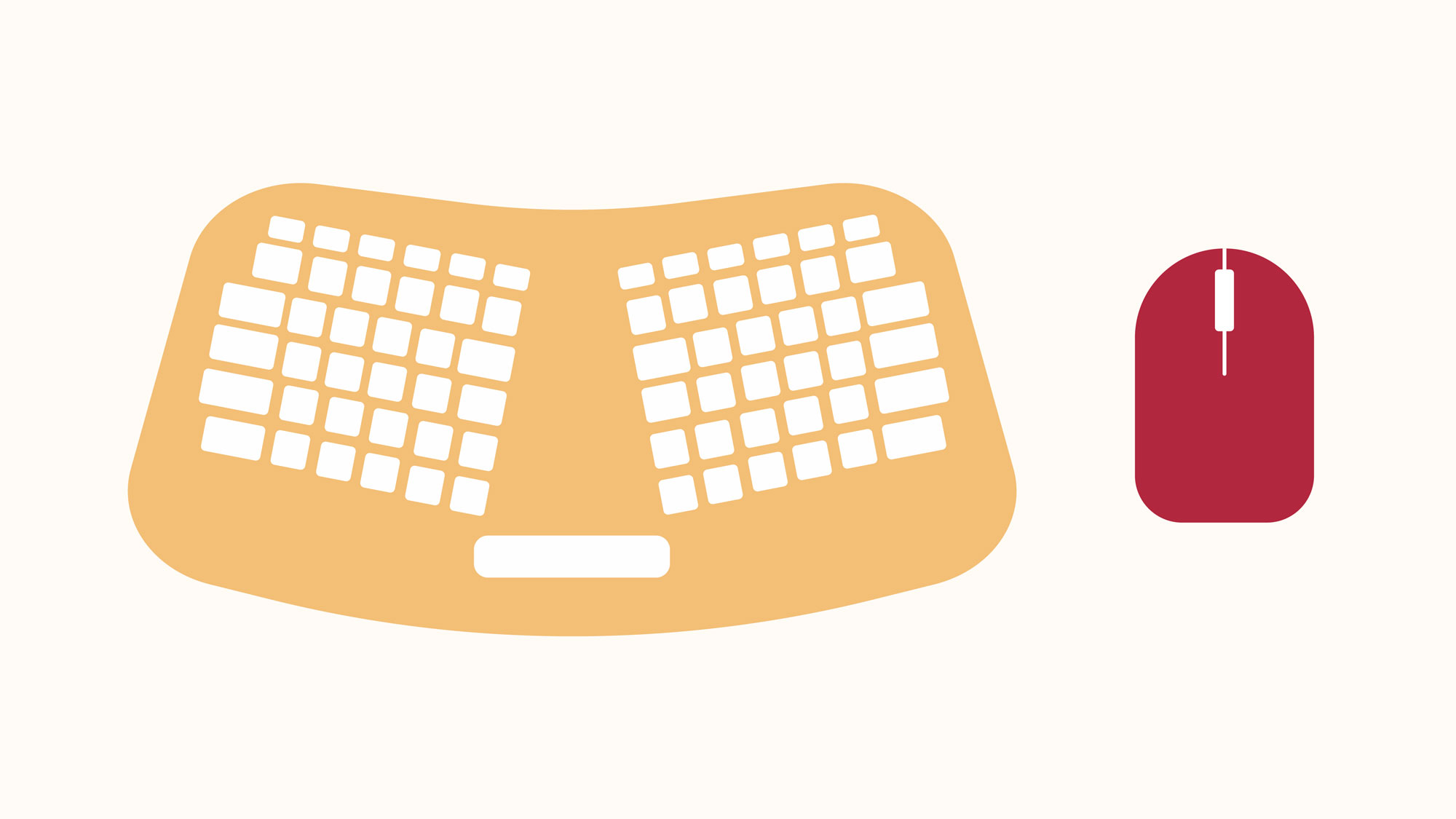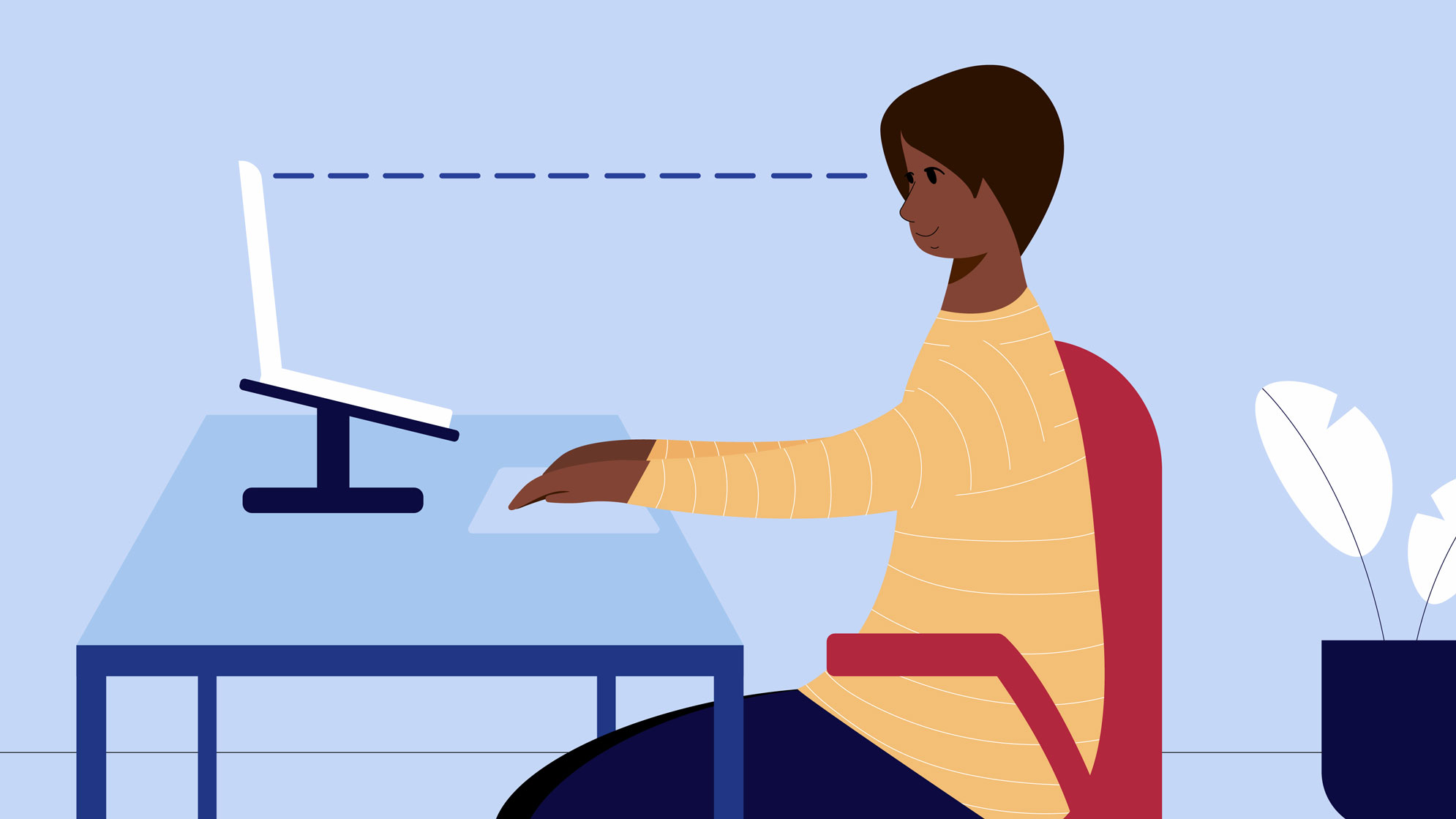Computer Basics -
Creating a Safe Workspace

Computer Basics
Creating a Safe Workspace


/en/computerbasics/protecting-your-computer/content/
In addition to keeping your computer healthy, it's important to think about your own health. Using a computer involves a lot of repetitive motions such as typing and using the mouse. Over time, these motions can begin to negatively impact your body, especially your wrists, neck, and back. Staring at a monitor for long periods of time can also cause eye strain. To minimize these risks, you should take a few moments to make sure your workspace is arranged in a comfortable and healthy way.
Watch the video below to learn more about arranging your workspace to avoid strain and injury.
Looking for the old version of this video? You can still view it here.
Computer ergonomics is the science of equipment design and how specific equipment usage and placement can reduce a user's discomfort and increase productivity. Some equipment is designed with special attention to ergonomics, like ergonomic keyboards and ergonomic chairs.

Here are a few tips to help you avoid injury in your workspace.





For more information on setting up a computer workspace, visit the Computer Workstations eTool from the Occupational Safety & Health Administration (OSHA).
/en/computerbasics/basic-troubleshooting-techniques/content/